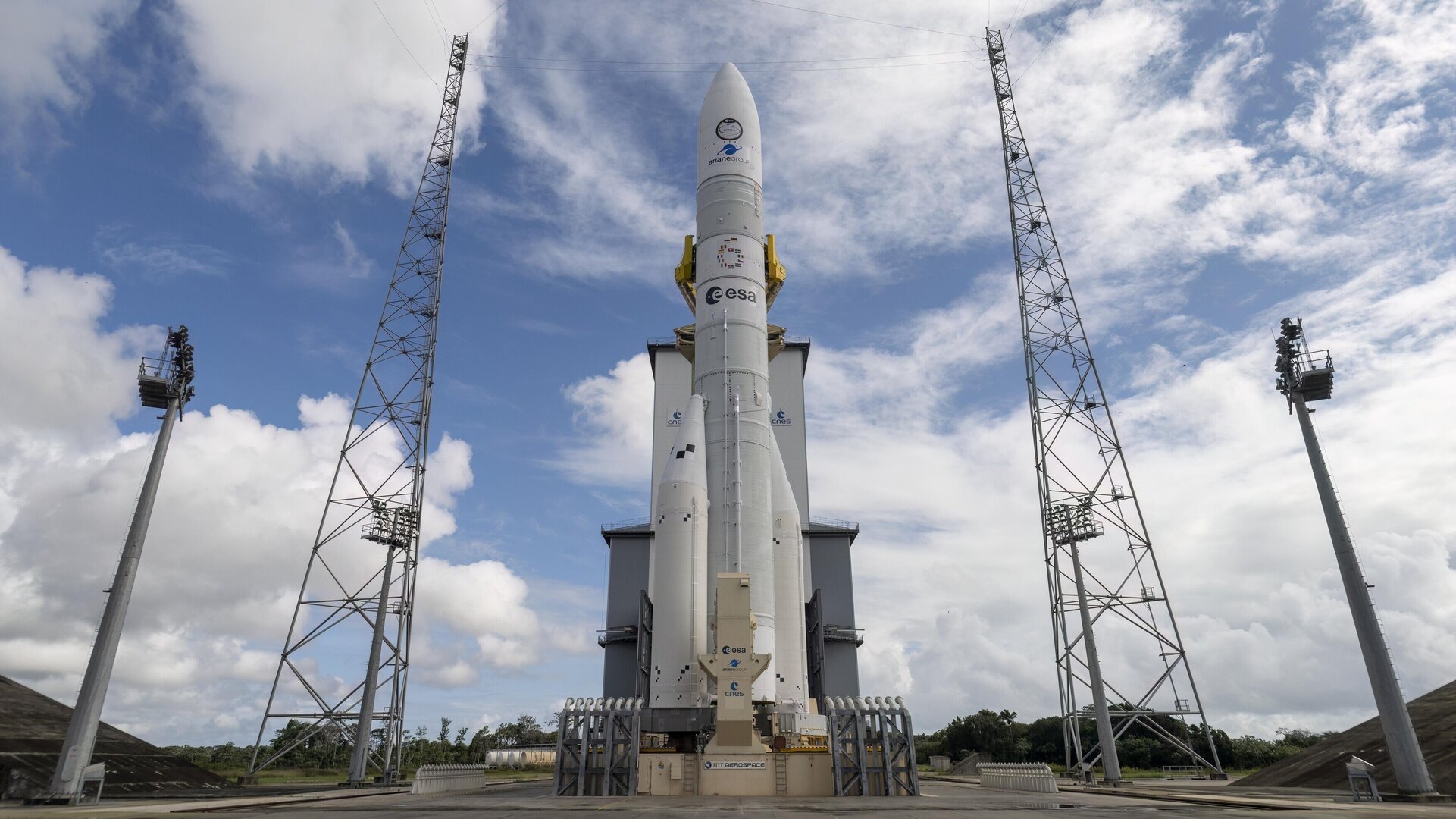HELSINKI — Europe is on the brink of a crucial moment as the Ariane 6 launch vehicle prepares for its inaugural flight Tuesday.
The Ariane 6 is set to launch from the Kourou launch site in French Guiana between 2:00–6:00 p.m. Eastern (1800–2200 UTC) July 9. The European Space Agency (ESA) is streaming the launch live via ESAWebTV.
The inaugural Ariane 6 flight will feature the 56-meter-long ’62’ variant, equipped with two solid boosters. The main stage is powered by the liquid hydrogen and oxygen-fuelled Vulcain 2.1 engine. This is an upgrade from the Ariane 5 main Vulcain engine.
The 62 can carry up to 10.3 tons to low Earth orbit, while the larger “64” featuring four solid boosters can lift up to 21.6 tons. The first flight however will only carry a number of small satellites and experiments from space agencies, companies, research institutes, universities and young professionals.
The first launch follows years of delays. The launcher is designed to succeed the venerable and now-retired Ariane 5 while reducing cost. The rocket had earlier been targeted to fly for the first time in 2020.
Ariane 6’s first launch—given the launcher’s delays, a backlog of 30 orders, and a European access to space crisis—will be a high-pressure and consequential first flight, for prime contractor ArianeGroup, launch service provider Arianespace, ESA and other stakeholders.
“For Europe it is mission critical to again have an autonomous access to space,” Hermann Ludwig Moeller, director of the European Space Policy Institute, told SpaceNews.
This would guarantee the launch of its own institutional missions. This includes the EU Space Programme, EUMETSAT meteorological satellites, ESA missions, security and defense-related missions, and commercial missions of operators, Moeller noted.
Ariane 6 already has 30 launches booked, 18 of which are for Amazon’s Kuiper constellation.
There is a sense of jeopardy, with plans to ramp up Ariane 6 flights to nine per year as soon as possible depending on a successful flight.
Test launches, however, have a high failure rate. “Statistically, there’s a 47% chance the first flight may not succeed or happen exactly as planned,” Josef Aschbacher, director general of ESA, said in May, tempering expectations.
Moeller added that the operational launcher would benefit “space applications such as climate monitoring, improved weather forecasting, banking and timing services, secure communications, 5G and Internet, civil and economic security, including protection of critical infrastructures in transport, energy, digital and defense applications.”
“Ariane 6 is essential and a prerequisite for the implementation of a broader European space policy and strategy.”
Asked how the expendable Ariane 6 and its extensive delays has potentially cost the European space sector, Moeller said: “The main impact in our view is the fact that the focus on the launcher crisis has made it difficult to advance on other dossiers and in particular on the accelerated use of space, at a time when other space powers and commercial entreprise do exactly that, in a race.
“And it is not the Falcon 9 launcher that is most visible in the debate, but the Starlink communications constellation, known to every taxi driver. It is not too late for Europe to catch-up, and IRIS2 is one step in that direction. However, the window of opportunity is now and it will close.”
With the unexpected gap between the retirement of Ariane 5 and Ariane 6 coming online, ESA needed to launch its Euclid space telescope on a Falcon 9 last year, followed by the EarthCARE satellite in May.
Notably, European weather satellite operator Eumetsat announced late June that it has moved one of its geostationary weather satellites from an Ariane 6 to a Falcon 9. That move, made for complex yet unexplained reasons, according to Eumetsat, surprised European space officials.
Another development, partly in response to its access to space crisis, is Europe looking to diversify its launch services. An ESA Council resolution July 5 set the way for the ESA-developed Vega to be commercialized by prime contractor, Avio.
The Council also authorized the use of the French Guiana spaceport for four micro- and mini-launchers from European launch service providers Isar Aerospace, MaiaSpace, PLD Space and Rocket Factory Augsburg (RFA).
“These decisions set the stage for more diverse European launch services in an increasingly competitive environment,” an ESA statement read.
RFA, in a statement to SpaceNews, called for change. The company’s position is that, in the future, private industry should build rockets, while ESA and EU procure the service. “Post Ariane 6 launch service development and operation shall be led by private industry,” RFA stated. The firm meanwhile noted Ariane 6 as “a great pan-European project” and was excited about the launch.
Moeller noted that Europe also needs to look beyond the debut launch. “By July 10, the focus in Europe needs to shift beyond launchers to the accelerated use of space, in all domains and to the benefit of the entire European economy, for the prosperity of its citizens, the competitiveness of its industries, as well as for the protection of global peace and inspiration of future generations.”

